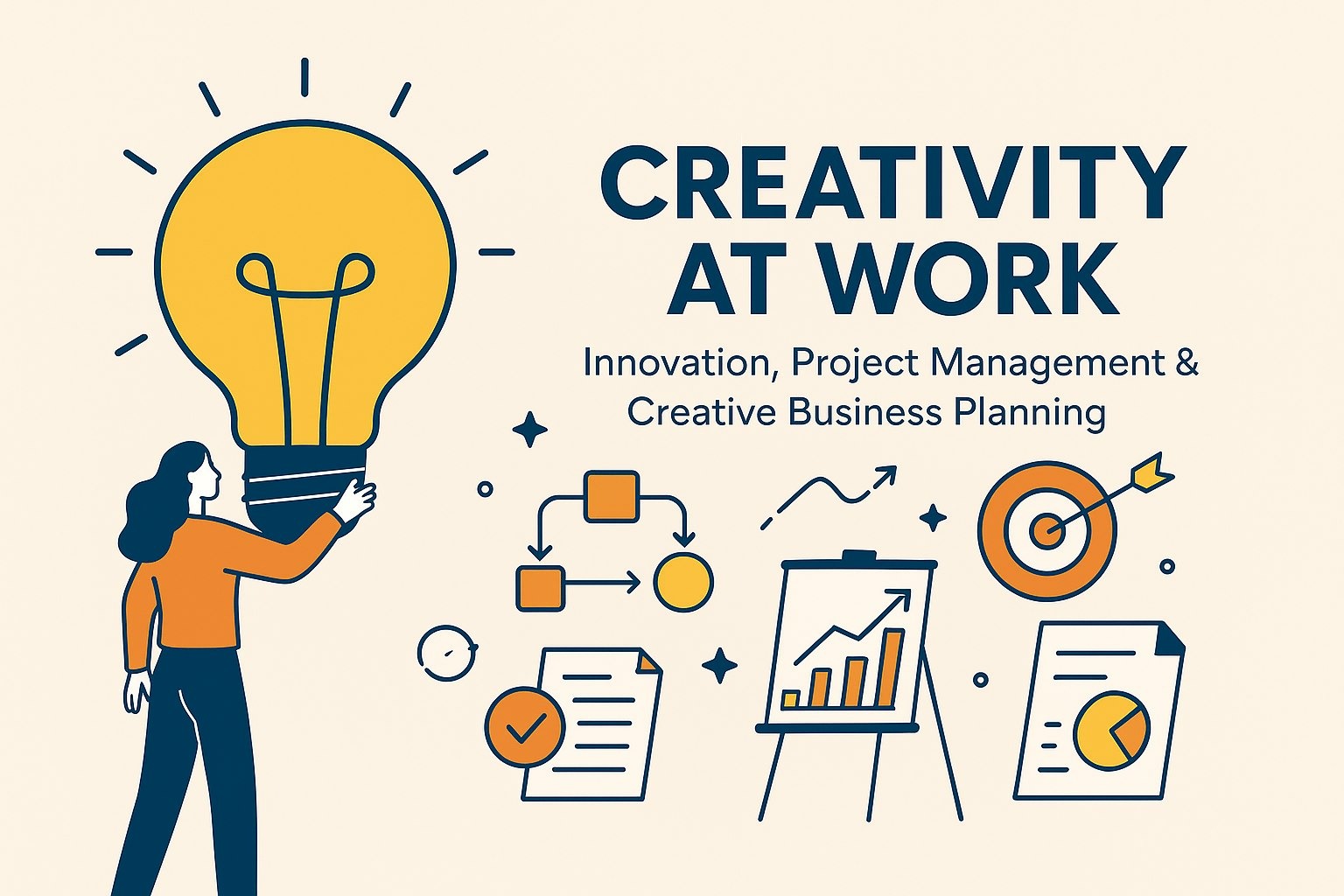
Creativity at Work
Bringing creativity into the workplace as a neurodivergent professional
The first time I was in residential treatment, they handed me a piece of construction paper and a box of map pencils.
“Draw your family tree,” they said.
I blinked.
This was… therapy?
As someone who had spent most of my professional life managing deadlines, coordinating projects, and creating clean systems in high-performing environments, this assignment felt ridiculous. Juvenile, even.
But I played along, because I developmental trauma put me here so I didn’t really have a choice. And something surprising happened.
The Diorama That Changed Me
Instead of just drawing the tree, I ended up building a diorama.
A real one. In my own way. I even used the paper that you tear off of the huge roll!
With photographs and markers. With flip cards that told mini-stories about the people in my life. With sections for joy, grief, estrangement, and hope. It took me days. I stayed up late. I got up early. I reorganized the entire structure halfway through.
And I didn’t just finish the project — I understood myself better because of it. That was the first time I realized that creativity wasn’t just a hobby.
It was a survival tool. Especially for someone like me.
Creativity Isn’t a Talent. It’s a Translator.
As a neurodivergent person, I often hear people say, “Oh, I’m not creative.”
But I don’t think creativity is about artistic ability. I think it’s a form of translation — a way to take what’s happening inside and make it visible to the world.
My creativity doesn’t look like painting or poetry (though those are beautiful too). It looks like:
- Redesigning intake processes so people stop getting stuck
- Mapping stakeholder emotion to color-coded kanban cards
- Building scripts for executive briefings that carry both data and story
- Turning abstract chaos into clear, tangible systems
This is what creativity looks like for me. And it’s how I work best.
When Work Feels Too “Professional” for Creativity
The hard part? Creativity in professional spaces still feels vulnerable.
There’s this unspoken idea in policy, nonprofit, or tech environments that creativity is something “extra.” That it’s soft. That it doesn’t belong in the real work.
But when you’re neurodivergent, creativity is the only way the work makes sense. It’s how we adapt, how we solve problems, and how we survive burnout cycles.
Still, it takes energy to:
- Build a project plan with just enough structure to keep it on track — but enough flexibility to make it work for real humans
- Create a status report that’s both visually intuitive and data-pure, so no one gets lost in translation
- Design a slide deck that tells a compelling story without sacrificing accuracy — because your brain needs visuals, flow, and maybe a little finesse to make the point land
Creativity Is Both a Challenge and a Savior
Let me be honest: sometimes creativity is hard.
When I’m masking, when I’m burned out, when executive function is out the window… even writing an email feels like too much.
But when I can access it — when I give myself permission to create instead of conform — that’s when the magic happens.
That’s when I:
- Connect dots no one else saw
- Find common ground across silos
- Turn invisible struggles into shared solutions
That family tree wasn’t the last time I felt foolish for choosing a creative path. And it was the first time I realized something important:
I usually feel foolish right before I feel free.
A Quiet Invitation
To my fellow neurodivergent professionals: your creativity might not look like what your workplace expects. Use it anyway. Trust it. Let it show up in your outlines, your workflows, your team meetings.
And to the leaders reading this: if someone on your team is sketching in map pencils while everyone else is in Excel, maybe — just maybe — they’re building the diorama that will change everything.
Your creativity isn’t extra. It’s essential. And it deserves space in the work.
You’re doing better than you think you are.
Post a comment